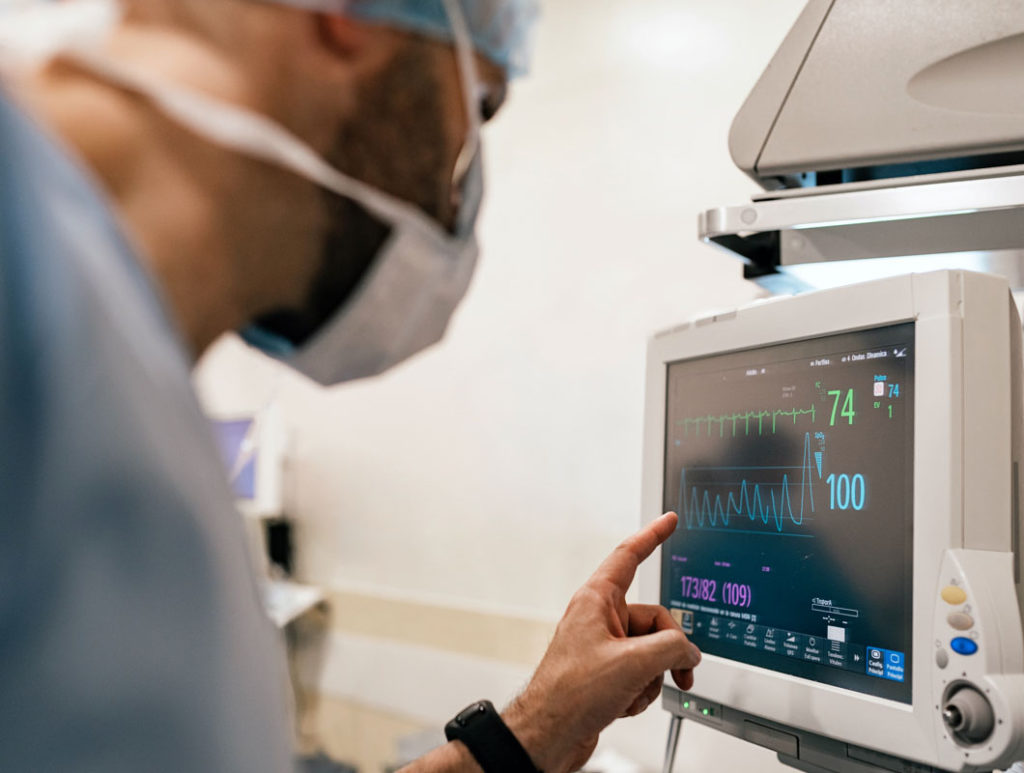Nonsurgical Cardiac Procedures
Nonsurgical cardiac procedures provide more treatment options for patients who are at high risk for complications from open-heart surgery and/or general anesthesia. Nonsurgical procedures are also associated with less pain, quicker recovery, and better patient outcomes.

Atrial Septal Defect (ASD), Ventricular Septal Defect (VSD), and Patent Foramen Ovale (PFO) Closure
Septal defects are small holes in the heart that did not close after birth. Treatment involves a catheter-based procedure with access through the groin to close the hole.
Cardiac Catheterization and Stenting
This catheter-based procedure is performed with access through the groin, wrist, or arm to detect coronary artery disease and evaluate structures of the heart. Narrowed and/or blocked coronary arteries can be opened with stents. This procedure may require an overnight stay in the hospital.
Electrophysiology (EP) Testing
The purpose of EP testing is to evaluate the heart’s electrical system for any damage or abnormality. It will indicate whether the patient requires a pacemaker, defibrillator, ablation, or surgery. This procedure may require an overnight stay in the hospital.
Impella® (Left Ventricle Assist Device or LVAD)
An LVAD is used to provide temporary support for patients with weakened heart muscle function. It allows the heart to rest and heal while the device circulates blood to the heart and the rest of the body.
Left Atrial Appendage Closure (LAAC) Device (WATCHMAN®)
An LAAC device may be used for a patient with atrial fibrillation who is not a candidate for long-term blood thinner use. The LAAC device involves a catheter-based procedure with access through the groin to close off the left atrial appendage, the area of the heart where clots can form. This procedure requires an overnight stay in the hospital.
Our experts were the first in the region to perform the WATCHMAN® procedure. Since then, we have successfully completed the most WATCHMAN® implants in the southern New Jersey and Philadelphia region (performed at Cooper University Hospital).
MitraClip®
With a nonsurgical procedure, the MitraClip® device is delivered through a catheter placed in the groin. This procedure is used for patients with significant mitral valve disease who may be at too high risk to undergo traditional open-heart surgery.
remede® system
This minimally invasive outpatient procedure involves placing a pacemaker-like, battery-powered device under the skin in the upper chest area. It is used to treat patients with central sleep apnea. The device has two small leads (wires): one that senses breathing and one that stimulates the respiratory muscles to work should irregular breathing be detected.
Transcatheter Aortic Valve Replacement (TAVR)
This nonsurgical procedure delivers an artificial valve through a catheter placed in the groin. It is used for patients with significant aortic valve disease who are at too high risk for traditional open-heart surgery.